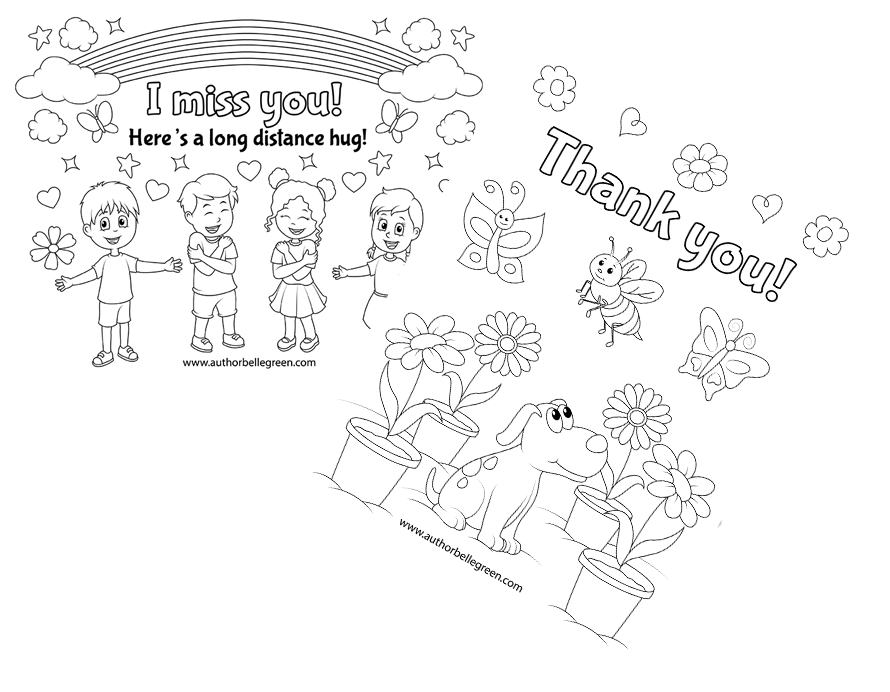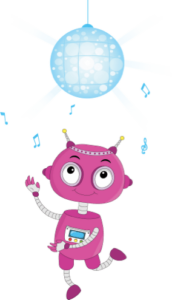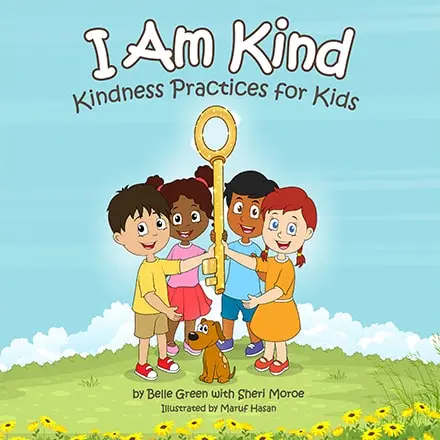I remember exactly where I was the first time my son counted to ten on his own. While not all parents may have this milestone etched in their subconscious minds, for some reason I was so excited that it created a permanent memory! In this article we’ll answer the question of when can kids count to 10 as well as give you a few pointers on how to help them achieve this important (and quite exciting) milestone.
This article may contain affiliate links. If you decide to buy something through one of my links, it won’t cost you a penny more, and I may get a small commission. Thank you for reading and for supporting Belle Green!
Along with basic skills, make sure your child is proficient in kindness! Add I Am Kind: Kindness Practices for Kids to your home library.
Just the Facts: When Can Kids Count to 10?
In general, most kids start counting between 2 and 4 years of age and are confidently counting to ten by age 3 or 4. While each child develops at their own pace, there are several stages of counting that parents can watch their littles ones go through and make note of.
Counting Ages and Stages
Here are the typical ages and stages that kids go through as their counting skills emerge:
Before age 2
Unless your child is a math and speech prodigy, don’t expect any counting out of your child in the first 24 months. In these early months and years of a child’s life, the primary thing you should be concerned about is simply to start exposing kids to numbers and counting during daily speech, books, and play.
Ages 2-3
Between ages 2 and 3, a child will begin inconsistently counting small groups of things. Just like you do with colors, shapes, and letters, just let children hear and see and learn naturally. Point and say the number. Counting during play can also be helpful for counting development. One, two, three stars! One, two, three dogs!
Ages 3-4
Between ages 3 and 4 is when you’ll see most kids beginning to consistently count to 10. At this stage in their development, they will also start to learn and understand one-to-one correspondence. Give them lots of opportunities to practice counting and plenty of praise when they do! My son was about 3 ½ when I first heard him count to 10, and yes, it’s exciting!
Rote Counting vs. Meaningful Counting
If your child is already counting to 10, great! Congratulations on this milestone! But what’s the difference between being able to count to 10 versus understanding what these numbers mean and comprehending quantity? Well, rote counting is essentially just memory. Much like the difference between being able to say their ABCs and actually starting to read or write words, there may be a gap between a child reciting the numbers one to ten and being able to understand there are five bananas, six frogs, and three butterflies on a worksheet or in a book. These skills will develop alongside each other, but maybe not at the same rate.
When Can Kids Count to 10? Counting Concerns
Is your child already 4 and not yet counting? While variations in learning and counting development are normal, some signs might indicate an underlying issue that warrants further attention. If you notice the following signs from your child at age 4, you may want to reach out to your pediatrician, a speech therapist, or a developmental specialist for extra support.
- No Interest in Numbers or Counting. A child who avoids or completely ignores numbers, even with encouragement, may need additional support.
- Trouble Memorizing or Recalling Number Sequences. While understanding quantity may take some time, a 4-year-old should at least attempt to repeat numbers in order.
- Lack of Basic One-to-One Connection. By age 4, a child should be able to grasp that numbers represent the quantity of objects (counting blocks or fingers correctly by touching one at a time and saying the number).
- Noticeable Speech or Language Delays. Counting relies on verbal skills, so children with speech delays may also struggle with counting. Fortunately, there are many wonderful speech therapy resources available.
- Difficulty Understanding or Following Simple Instructions. If a child is struggling with basic directions related to numbers (for example, “Give me two oranges.”) that may indicate broader learning difficulties.
- Other Developmental Delays. By age 4 you may have already noticed other delays (speech, motor skills, social interactions). If that’s the case for your child, this may also impact counting. Follow up with your pediatrician or therapy partners to find out how they can help.
In most cases, a late start with counting isn’t necessarily a cause for serious concern. Parents can increase exposure to numbers and counting, play counting games, change up visual and tactile learning aids, and encourage overall language skills to help with the development of counting. However, being aware of potential red flags ensures that children who need extra support receive it early. So don’t be afraid to ask for professional help!
How many acts of kindness can your child count in this book? Check out I Am Kind: Kindness Practices for Kids today.
Why Do Some Kids Learn to Count Sooner or Later Than Others?
Many factors influence early counting or late counting. Some children learn earlier and some later. Kids who are exposed to counting and numbers early and often will typically master this skill sooner. Parent involvement and talking about numbers and counting frequently will also help boost early learning. A young child with an older sibling who is already counting and often counts or uses numbers will also be encouraged to do the same.
Cognitive development and individual readiness for counting, speech, basic math, and other skills also vary widely. So the answers to questions like when can kids count to 10, when can kids write their name, when do kids learn left and right, or when do kids learn to tie shoes will all vary a bit. Some children naturally master these skills earlier than others. Some may “get” numbers before they are actually ready to start counting out loud. Of course, neurodivergence, ADHD, autism, and other factors will also influence a child’s number learning. Each child is different and unique, which is one of the biggest rewards and greatest challenges of parenting!
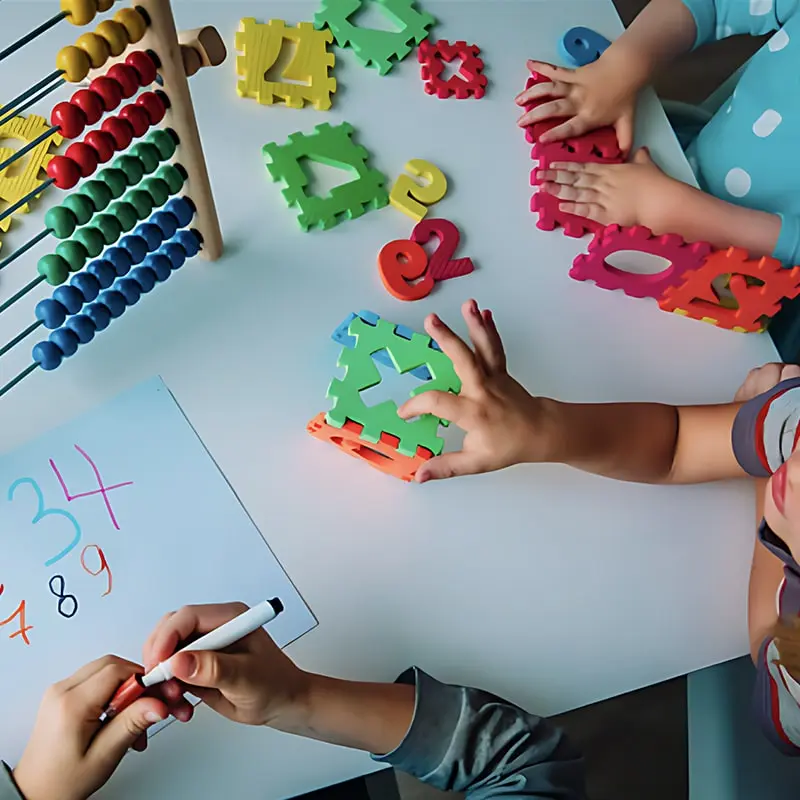
Activities to Help Kids Learn to Count to 10
Ready to jump in and help get your child rolling on their numbers? Great! Here are some activities, tips, and play-based ideas to help you help your child learn to count.
Fun Number Learning Activities
Counting and number activities are super easy to incorporate into daily life with a young child. Keep these ideas in mind as you go through your typical day. And if it’s a rainy day? These are great things to do inside with kids!
- Everyday counting. Count stairs, count fingers, count bites of food, count books on the shelf, etc. There are endless opportunities to count each and every day!
- Songs and Rhymes. Nothing makes ideas stick or makes memorizing easier than songs and rhymes. YouTube is a fun and free way to learn new counting songs.
- Counting Books. Why not dig into learning numbers and counting during your regular reading time? Choose a counting book that matches your child’s interests, from dinosaurs to bugs to dogs to zoo animals!
Games That Require Counting
Another way to help work counting learning into your routine is to choose games that require children to count. Game play is the best way!
- Hide and Seek. Who knew hide and seek could be a learning tool? Because the seeker has to count while others hide, it’s the perfect chance to practice. If the child can’t yet count to higher numbers, ask them to count to ten two or three times.
- Hopscotch. Grab your sidewalk chalk and go play a game of hopscotch! (If you forgot how to play, brush up on it here.) Hopscotch combines counting, drawing, and physical activity, making it an ideal early learning game for numbers and counting!
- Board Games. Try board games that need just a little counting, like Candy Land, and work your way up. I love this super cool Magnet Color & Counting Maze game. It’s a workout for numbers and counting, colors, and fine motor skills all rolled into one!
Using Technology
While personally I don’t recommend screens for children under 24 months of age, videos and apps can come in handy for helping out with learning concepts like counting, numbers, number recognition, and other early learning skills. Check out what the Mayo Clinic has to say about screentime guidelines. Then choose for yourself what’s right for your child and your family.
- YouTube Videos. An endless resource for just about anything, YouTube is my go-to for basic learning. Start with super simple number and counting videos like this one and when they’re ready, move on to quiz-like videos to test their skills.
- Phone Apps and Programs. Do a search in your Android or Apple app store for “preschool counting app” and you’ll find lots of choices, many for free. While we didn’t use an app for learning to count, paid programs like ABC Mouse are very useful for covering lots of early learning concepts including numbers and counting.
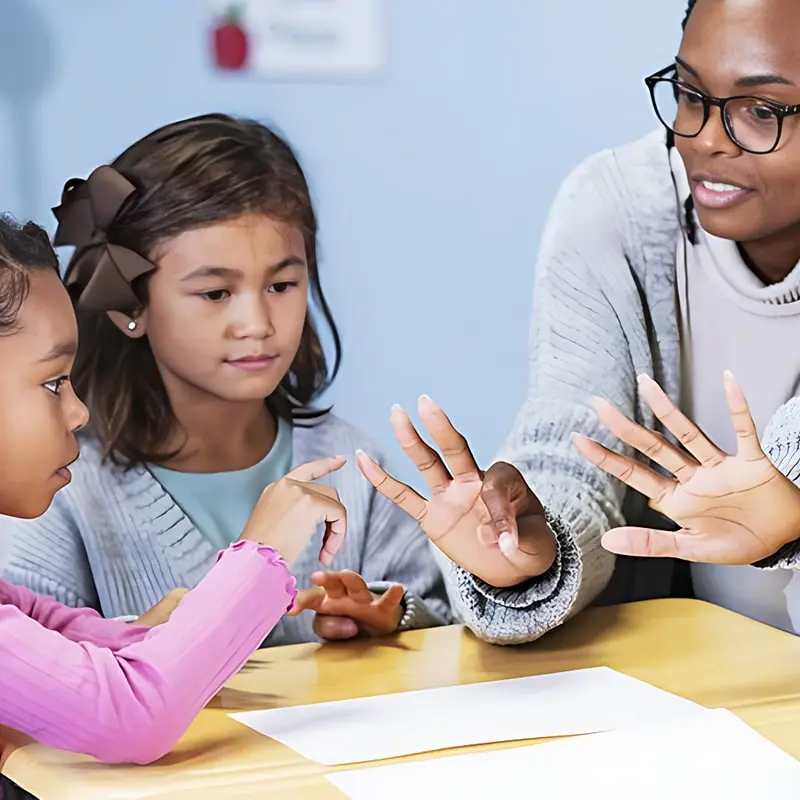
Why not learn kindness along with numbers? Strengthen your child’s social skills with I Am Kind: Kindness Practices for Kids.
Counting vs. Writing Numbers: Two Critical Skills
In general, children will count verbally before they learn to write numbers. Here’s the progression in the development of speech, recognition, understanding and writing that you can expect to see as your child learns the critical skills.
12-24 Months: Exposure
During the first 12 to 24 months of growth, babies and toddlers will be hearing numbers and seeing numbers. This includes everyday speech as well as seeing them in books or on television.
12-18 Months: Imitation
From around 12 to 18 months, you’ll notice an uptick in your child repeating words, including numbers. At this point a child is unlikely to understand what “two” or “four” means, but will start to repeat them as part of the speech learning process.
24 Months: Pattern Recognition
At around 24 months, a child may begin to understand that counting is a sequence of numbers. This is helped along with rhymes like “One, two, buckle my shoe,” and so on. This also develops along with learning letters. (How many letters should a 2-year old know?)
2-3 Years: Memory Counting
After 24 months many children may begin counting from rote memorization. Especially when parents are counting as a warning for misbehavior, children quickly learn that 2 comes after 1, and 3 comes after 2. And they don’t want mom to get to 3! At this time children may also recognize numbers but not necessarily connect them to the meaning of quantity. Early counters may also begin counting to ten from memory at this time as well.
Ages 3-4: Understanding Quantity
Between 3 and 4 years of age, most children will start understanding quantity in addition to rote counting from memory. “I want two chicken nuggets” or “We read three books.” They will start to point and count, for example, one, two, three ducks. This is known as one-to-one correspondence. During this time children will also begin to recognize numbers. For instance, they will understand that a written number 5 correlates to the spoken word “five.” Numbers and counting begin to take on more meaning at this age.
Ages 4-5: Number and Symbol Association
When a child is between 4 and 5 years old they will likely easily recognize at least the numbers 1-10 and match the written number symbol with the spoken name of the number. Lots of children will be counting well beyond 10 at this point as they learn quickly! They’ll also start to notice when numbers are out of order. For example, they might call you out if you skip #5 when counting in sequence.
Ages 4-6: Writing Numbers
At the same time as speech progresses and children are saying numbers and counting out loud with meaning, they will also begin to write numbers and letters. Tracing is an excellent way to build this skill. You might start with having them trace shapes, as shapes are typically easier for younger minds to understand than numbers. When they’re ready, you can ramp up to tracing numbers and letters. Those fine motor skills take time to develop, so don’t rush it. Give them the opportunity and let them bloom naturally with guidance. Before you know it, they’ll be writing numbers and letters on their own.
As your child moves through these stages, they will make a lot of mistakes. Just gently correct them when they go astray, and make sure there’s plenty of praise and support for the efforts they make. Incorporate counting activities into play to help keep the learning low-stress. Especially when they begin writing numbers, you’ll see a lot of interesting things, including backward numbers and so on. Give them time to grow and flourish. If these types of mistakes continue, you can always have them evaluated for dyslexia and catch any challenges early on.
Put kindness into practice early in life! Read I Am Kind: Kindness Practices for Kids to your child today.
What Comes After Counting to 10?
A question that often comes after when can kids count to 10? is now what? Now that your child is successfully counting to 10, what comes next? Let’s get into what you can expect from your future math genius as they continue to learn and grow.
Continued Counting
Of course, you can expect your child to continue expanding their counting repertoire up through the teens and into the 20s, 30s and beyond in the months following mastering one to ten. Keep up with the counting activities and this learning will progress naturally.
More or Less
Another skill you can expect to see is the development of understanding number relationships including “more” and “less.” Especially when it comes to the number of scoops of ice cream they want, children usually understand “more” early on!
Simple Math
Basic math skills will start at varying stages depending on the child. Some children just “get it” earlier than others. Keep encouraging them and demonstrating basics (I have two apples. If I get one more, I have three apples!)
Skip Counting
Skip counting usually begins with counting by twos and is one of the early skills children learn that they will use their entire lives. Counting by twos, fives, and tens are the easiest and will likely happen before any other types of skip counting and prepares a child for early math concepts.
Number Pattern Recognition
You’ll also see your child recognizing patterns when it comes to numbers. If they hear you give out your phone number a lot, they may have it memorized long before you realize it. (This is a great skill for them to have, too!)
Real Life Use of Numbers
Children will gradually begin to understand and use numbers in everyday life situations. They’ll understand that ten minutes left to play is longer than three minutes or that $100 is a lot more money than $2. If they help you out with cooking activities in the kitchen, this is the perfect opportunity for them to start learning numbers and math as it relates to measuring ingredients. It often feels like play, too!
Math Skills Development
Eventually you’ll see basic and then more advanced math skills coming out of your little counting genius! Simple addition and subtraction learning shows up between ages 4 and 5 and basic multiplication usually emerges around 6 to 7 years old. Remember that each child’s development varies and the most important thing is to keep encouraging. Remember to reward effort, not just correct answers.
Keep those Numbers Positive: My Math Story
Especially for parents who struggled with mathematics as children, it may be tempting to frame counting, numbers, and math skills as something that is “hard.” Avoid the temptation to label math as challenging, don’t say about yourself “I’m bad at math”, or anything that indicates math skills are for other people. Children tend to take on quite easily ideas about things at these young ages, and we want to do everything we can to help encourage them and get them to believe in themselves. Often, that means we have to believe in ourselves, too.
When I was a young child, I got the idea that I was bad at math. Numbers became scary; I hated math and felt like I would never be good at it. This negative belief followed me all through my K-12 years and I consistently delivered C’s and D’s in any type of mathematics. When I went to college, I was terrified of having to take college algebra, but I needed it to graduate. I was also paying for school on my own and I decided that if I was shelling out all this money for school, I was going to learn it.
Because I had poor math scores, I started in a pre-algebra class. It was a bit demoralizing, but once I decided I was going to be good at it, my perspective changed. It didn’t seem so hard after all. I just had to learn the steps, follow the steps, and not rush it. I ended up doing so well that I skipped the intermediate pre-algebra class and went straight into college algebra the next semester.
Not only did I ace college algebra, but I was also tutoring another student. If you’d told me that six months earlier I would have laughed. But after that experience I began to believe in myself. I went on to get an A in calculus (including a 100 on a test from a teacher who said no one gets 100s in his class) and ultimately got a degree in Business Finance.
Did I suddenly become good at math? Or did I just change a false belief about myself? This is a long story to simply say keep mathematics activities and speech positive around your children. No one needs to grow up with a false self-belief that impedes their development. Confidence is critical!
Learn and Play with Belle Green
I hope you’ve gotten a lot of value out of this article and found a few ways to incorporate number learning and counting into your daily routine with your child. You can count on me to always try to bring learning and play together in everything I create, as that’s the best way to make these concepts stick! Be sure to check out my other blog posts on parenting, activities for children, holiday celebrations (virtual Valentine’s Day ideas for kids, non-candy and no-sugar Halloween gifts for kids, Christmas riddles for kids, and more).
So be sure to sign up for my newsletter and keep up-to-date on all my new posts, book releases, and all the other fun and learning activities we’ve got going on here at Belle Green. When you sign up you’ll also get a set of everyday special events coloring pages 100% for free (thank you, first and last day of school, congratulations, get well soon coloring page, etc.) I’m low-key so you won’t see me in your inbox every day and I never, ever sell or give away member information. I mean never. Your data’s safe here!
Become a Greenie!
Join my subscribers list and get a FREE PDF copy of Everyday Special Events Family Coloring Pages! These 12 fun coloring pages for kids include Happy Birthday, Get Well, First Day of School, Last Day of School, Happy New Year, Congratulations, and more! Just download and print!
Your data is safe here! I never sell or share email addresses.

